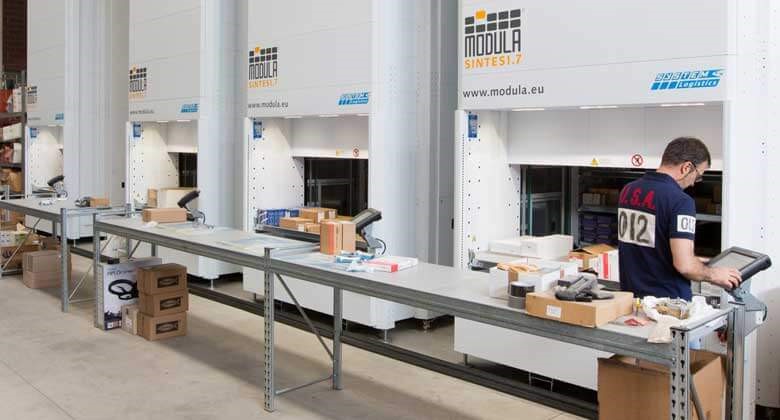
Does it seem like you never have enough space for your warehouse? Perhaps you need to improve safety around your facilities for your workers, or need additional protection from shrinkage, both from without and within. The tide of supply and demand can be tricky, and expansion can be both costly and risky — addressing these issues can be difficult. Space is hard to come by, and expansion requires additional work, on top of your workload. Reliable employees and equipment can be even harder to find, and there will always be a guarantee that injury or breakage will occur in conventional storage systems. It could be that the best solution isn’t to expand in a traditional sense, but rather to optimize the use of what you have so you can accommodate additional scale without additional facilities.
Vertical storage systems, or automated storage and retrieval systems, use previously unused warehouse space to pack materials. They do this by either, as the name suggests, packing materials vertically, or packing materials horizontally, and in such a way that space for retrieval is minimized solely to the areas people will need to access. Using computers and motorized parts, the system delivers products straight to the employee, without requiring them to retrieve it on their own. The system reliably packs, stores, and delivers materials on its own as they are needed, while tracking the use and movement of materials through asset management software. These systems not only make use of unexploited space, but they also streamline your production or distribution process while reducing the risk of accidents and shrinkage.
There are three main types of automated storage and retrieval systems:
- Vertical Lift Modules
- Vertical Storage Carousels
- Horizontal Storage Carousels
The vertical lift module stores trays of materials on static shelves, going as high as possible to use up as much vertical space as possible. Shelves are packed as close as possible, only providing enough space for an extractor in between them. When items are requested by a user, the electronic extractor finds the tray and carries it down to the user. These systems are the most advanced and the most computerized, offering an array of features such as shelf tracking and user logging. VLMs are also the safest, most efficient, and most organized of the storage system types.
Vertical storage carousels are not unlike VLMs. They store trays of materials on pivoted shelves that are attached to a conveyor. The conveyor moves the entire system in a vertical loop. When an item is requested, the system rotates until the appropriate shelf is brought forward. These modules by themselves use up the same amount of space as the VLMs, but due to how they work, they use up that space slightly less efficiently in exchange for more practicality and simplicity. Like the VLMs, they are computerized and offer the same organizational and security advantages as a VLM.
The horizontal storage carousel, unlike the other systems above, uses a more traditional amount of floorspace, however, most of these systems can be stacked together in banks. The carousel guides shelves of materials around a loop, not unlike the loop in the vertical storage carousel, delivering the necessary items to the user. This still saves space, since the shelves within the loop can be packed close together, and are also easily computerized for better asset tracking and management.
Learn more about automated storage and retrieval systems from Vertical Storage.














